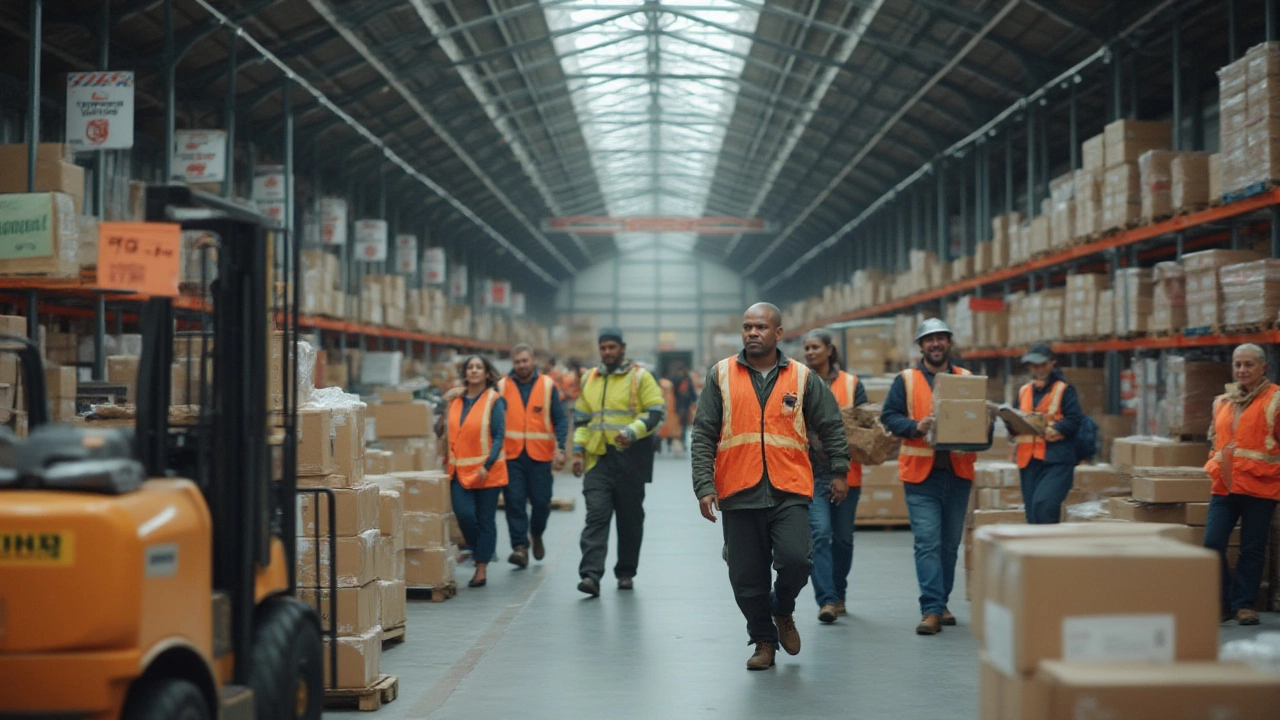Ever wonder how your online order travels halfway across the world and ends up at your door in just days? There’s a whole invisible army behind the curtain making it possible, and that’s the world of logistics. But what’s got so many people packing delivery vans, managing warehouses, and mapping out complex routes 24/7? It’s not the kind of job most folks dreamed about in kindergarten, yet the industry is booming—and lots of people seem hooked on it. Let’s unpack what drives people to roll up their sleeves in logistics, why they stick around, and what makes this often-overlooked sector tick.
The Pulse of Logistics: What Keeps the Wheels Turning
Logistics is basically the circulatory system of our modern world—it’s what keeps goods, medicine, and food moving to where they’re needed. When you start talking with people in the business, you quickly notice a common thread: a sense of real-world impact. There’s something satisfying about tracking a package from point A to B and making sure it doesn’t get stuck in some far-off warehouse. Especially since 90% of world trade moves by sea, air, or ground logistics, according to the International Transport Forum. Logistics pros see their fingerprints on the economy with every pallet shipped and every delivery made.
Another big draw? Action. The variety in day-to-day work is wild. One day you might be managing a shipping crisis because of a freak snowstorm in Ohio; the next, you’re troubleshooting customs paperwork for that one stubborn crate headed to Brazil. It’s the kind of challenge you rarely get in a cubicle job. In fact, a 2023 LinkedIn survey revealed that 78% of logistics workers thrive on “emergency problem-solving” tasks—they crave that adrenaline rush.
People are also drawn in by the surprisingly broad horizon for advancement. You don’t need to have a fancy degree to get started. Many of the industry’s top managers first set foot in a warehouse as pickers or drivers. As long as you’re willing to learn and hustle, there’s room to move up. Recruiters routinely highlight logistics as “the land of opportunity” for folks who value real-world results over academic credentials.
Stability Meets Scale: Job Security No One Talks About
Let’s face it: not every industry can offer decent job security these days. But logistics is something different. Whether the world is at peace, at odds, or mid-pandemic, people still need their pizza, their medicine, and their tech gadgets. In the chaos of March 2020, when factories shut down and offices emptied, logistics kept moving—and, in many places, turned into overtime central.
This job security comes from logistics’ role as a universal backbone. According to the U.S. Bureau of Labor Statistics, logistics jobs are projected to grow faster than average through 2032, with supply chain managers often making upwards of $90,000 a year. Warehousing and transportation are ranked as two of the top recession-proof fields, because as long as people keep buying—anything—someone needs to get it from point A to B.
Tech doesn’t mean fewer jobs, either. Forklifts have gotten smarter and warehouses are more automated, but the real demand now is for people who understand the bigger picture. The more the world shops online—the e-commerce boom is real—the more folks with logistics know-how are needed to keep up.
Take those supply chain hiccups everyone felt during the COVID-19 pandemic. Toilet paper vanished from shelves not because it stopped being made, but because no one expected a run on bathroom essentials. And suddenly, the world realized how easily everyday logistics can go sideways—making it one of the most important, and now respected, industries out there.

Perks, Paychecks, and the Little-Known Benefits
So, what’s in it for the people in hi-vis vests and clipboard-wielders? Truth is, there’s more than just a paycheck. Logistics companies are in fierce competition to attract skilled dispatchers, managers, and drivers. That means perks. Think flexible shifts for parents, tuition reimbursement, sign-on bonuses, and even pet insurance at some of the big carriers.
While starting pay isn’t always sky-high, logistics rewards hustle and loyalty. Roles like freight brokers, warehouse supervisors, or supply chain analysts can pay very well. Entry-level positions often come with paid training—a big deal if you want hands-on experience before racking up more school debt. Nationwide, hourly logistics workers in 2024 averaged $23.50 per hour, well above minimum wage. According to a Glassdoor report, Amazon’s fulfillment centers paid frontline workers a median of $40,000 annually—and that’s before you move into supervisory positions or specialized roles.
There’s also a camaraderie most office jobs can’t match. Teams often bond over long nights and shared wins, creating a tight-knit vibe that keeps folks coming back. It’s not all about hard hats and steel-toed boots, either. The explosion in online shopping now means creative jobs in logistics marketing, sustainability, and tech—fields that hardly existed a decade ago.
The cherry on top? Real impact. At the end of the day, people in logistics know that when there’s a hurricane, a surge in demand, or a global disruption, they’re the ones who step up to keep things running. That sense of importance is hard to replicate.
The Curveballs: Challenges That Come With the Territory
Of course, no gig is perfect. Logistics can pile on the pressure—especially when things go wrong. A ship blocked in the Suez Canal for six days sent shockwaves through the global supply chain. One missed delivery can set off a whole chain reaction, from empty shelves to angry customers. This means people in logistics need thick skin and a good sense of humor. Flexibility is a must; schedules change with the wind, and the hours aren’t always nine-to-five.
One of the main complaints? Stress. The International Journal of Logistics Management reported in 2024 that nearly half of surveyed professionals cited “high-pressure situations” as the hardest part of their job. But those who stick with it say it’s also the thrill of the chase and the problem-solving that keeps the work interesting.
There’s also plenty of physical grind, especially for warehouse workers, drivers, and movers. It’s not unusual for logistics workers to walk miles in a single shift, lifting and hauling everything from boxes to bulky furniture. Injuries can spike during busy holiday seasons or in extreme weather. That’s why bigger employers are getting serious about safety, better equipment, and smarter scheduling to keep burnout at bay.
Despite all that chaos, logistics careers attract problem-solvers—folks who like a puzzle and don’t mind a little sweat. Most who make a career here actually thrive under the wild unpredictability. As supply chain expert Dr. Yossi Sheffi famously put it:
“It is logistics—and the people behind it—who stand between abundance and empty shelves.”

The Secret Sauce: What Keeps People in Logistics (And How to Get Started)
So, why do people really work in logistics? For many, it comes down to a mix of real-world impact, job security, adrenaline, and plenty of chances to move up in life. The work may be tough, but the satisfaction is huge—especially when a tricky shipment makes it on time or a team pulls together to solve a problem no one saw coming. The industry is a magnet for doers, thinkers, and builders who like to be where the action is.
If you’re thinking about jumping in, the path isn’t as complicated as it looks. Here’s what you’ll want to keep in mind:
- Check out entry-level roles like package handler, dispatcher, or load planner. These positions often require nothing more than a high school diploma and a strong work ethic.
- Get certified if you want an edge. Programs such as the Certified Supply Chain Professional (CSCP) only take a few months but can open doors.
- Ask about on-the-job training. Big companies like FedEx, DHL, and UPS routinely offer this.
- Be ready for shifts and overtime—peak seasons won’t wait for anyone.
- Flexibility and a healthy sense of humor go a long way in handling the unexpected.
The future? Logistics isn’t going anywhere. With global shipping volumes expected to double by 2030, and e-commerce still exploding, those willing to jump in now will find themselves in the thick of one of the world’s most important, and quietly heroic, industries. And who knows—you might just find yourself hooked on the challenge, too.


